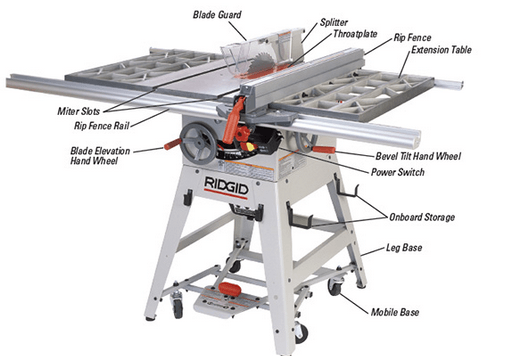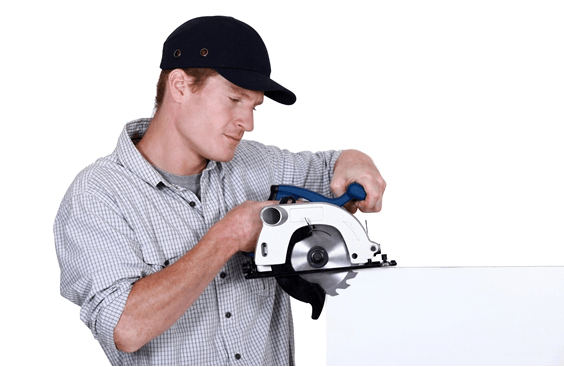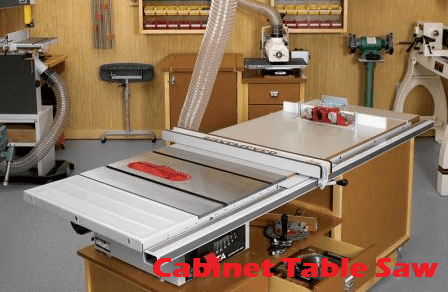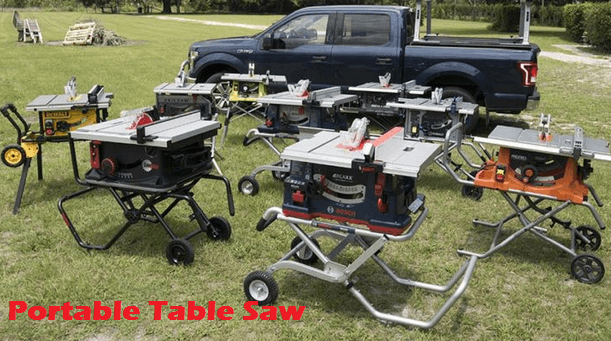As an Amazon Associate, I earn from qualifying purchases.

Assess how many other fixtures or tools are plugged into the same circuit as your table saw. If you have no option but to use this circuit or running the saw, he sure to turn off or unplug other power drains on the circuit to free up as much amperage for the saw as possible.
If the circuit still trips, check the size of the breaker in your home’s service panel. It will likely be a 15-amp breaker, which is too small for any saw that develops 1 hp or more.Have a licensed electrician wire one or more 20-amp circuits in your shop for operating the saw and other large tools. Run your table saw off a separate circuit from the one that controls the shop lights.
Otherwise, a tripped breaker will leave you in the dark with the blade still spinning, and you may not be able to see it.
Never plug a table saw into an ungrounded outlet or remove the grounding pole on the plug. Most saws are almost entirely metal, and any short in the wiring could turn you into the path of least resistance for electricity. Use a neon circuit tester to check the outlet you’ll he using for the table saw to be sure it has a working ground. Just because an outlet is three-slotted doesn’t mean the grounding pole is properly wired.
You’ll probably need to use an extension cord for operating your saw in the middle of the shop. Choose one rated to carry at least the maximum amperage required by the saw. The cord sheathing will usually indicate how many amps the cord can safely carry. The more amperage the cord can handle, the better. Pick the shortest length cord that will work, which will help eliminate a condition called voltage drop.
Voltage drop happens when undersized or particularly long cords create resistance or electricity to pass, starving the motor of power. The cord should he long enough, however, to lie on the floor rather than he suspended in mid-air where it becomes a tripping hazard. If you need to use an extension cord for extended periods, tape it down to the floor.
Essential accessories
To saw safely and comfortably, you need a few accessories. We’ve already mentioned rolling saw bases, but other essentials include one or more work piece support devices, dust collection, and push sticks and feather boards.
You may want to invest in a crosscut sled or sliding miter table for cutting oversized work pieces more easily and accurately. Personal safety gear is a must. You’ll need ear and eye protection whenever you saw, and a respirator can be helpful while cutting materials that produce lots of dust or if you’re sawing for extended periods of time.
Work piece support. Ripping and crosscutting operations often involve sizing down work pieces that are much longer or wider than the saw table. To make these cuts safely and accurately, you’ll need to set up additional support surfaces behind or alongside the saw. Extra work piece support is particularly helpful just after you’ve made your cut and you’ve got two pieces to contend with rather than one.
You should never have to lean over the blade or place your hands or arms in harm’s way to steer, support, or catch the wood as it leaves the saw. Support devices alleviate these dangers, and they also keep work pieces from falling off the saw and becoming damaged.
Cabinet shops often have table saws surrounded on three sides with large tables. This way, cutting up sheets of plywood never becomes a wrestling match with gravity.
Roller stands are the typical form of work piece support for table saws. They consist of a folding metal frame with a roller tube or a number of captured ball bearings on top. Roller stands can be positioned beside the saw for crosscutting wide work or in back of the saw for long rip cuts. The ball-bearing style is particularly useful and less prone to moving because the bearings are non directional.
Be sure the stand you buy can he adjusted up and down and takes a broad stance on the floor. Both types of stand should he weighted down at the base to keep them from shifting or rocking during use.

Roller stands are only one option for work piece support. Any flat stable surface can help hold up your work piece during sawing. You could build a worktable just lower than your saw table height and use it for other tasks when it isn’t being used for work piece support. A sawhorse also works if you clamp a taller bearing surface to it. Or simply ask someone to hold the work pieces as they leave the saw.
If you have a cabinet saw, you can buy out feed roller tables that mount on the saw and fold down when not in use. These are handy but quite expensive. II you’re mechanically inclined, you can probably fabricate your own out feed roller tables or roller stands without much difficulty.


Leave a Reply